marksa222
Landlord.
I went to my LHBS with a recipe book and tried to get the ingredients for a hoppy APA. He didn't have anything I needed so we substituted all the ingredients. I hope he gave me an adequate alternative, and not just flog me the stuff he couldn't shift!
So here's what I made;
Grain
5.1kg M.O
245g terrified wheat
200g crystal
Hops
14g Admiral (16.5% AA) - 60 mins
12.5g challenger (8.5% AA) - 10 mins
10g Green Bullet (12% AA) - 10 mins
12.5g challenger (8.5% AA) - 0 mins
10g Green Bullet (12% AA) - 0 mins
Mashed at 68 degrees for 90 mins BIAB
Tsp Irish moss at 15 mins
Started with 33L water which had been left overnight with a crushed campden tablet.
O.G was 1.056 and ended up with 20l in FV.
I used no chill as I don't have a wort chiller yet.
And here are some pics!
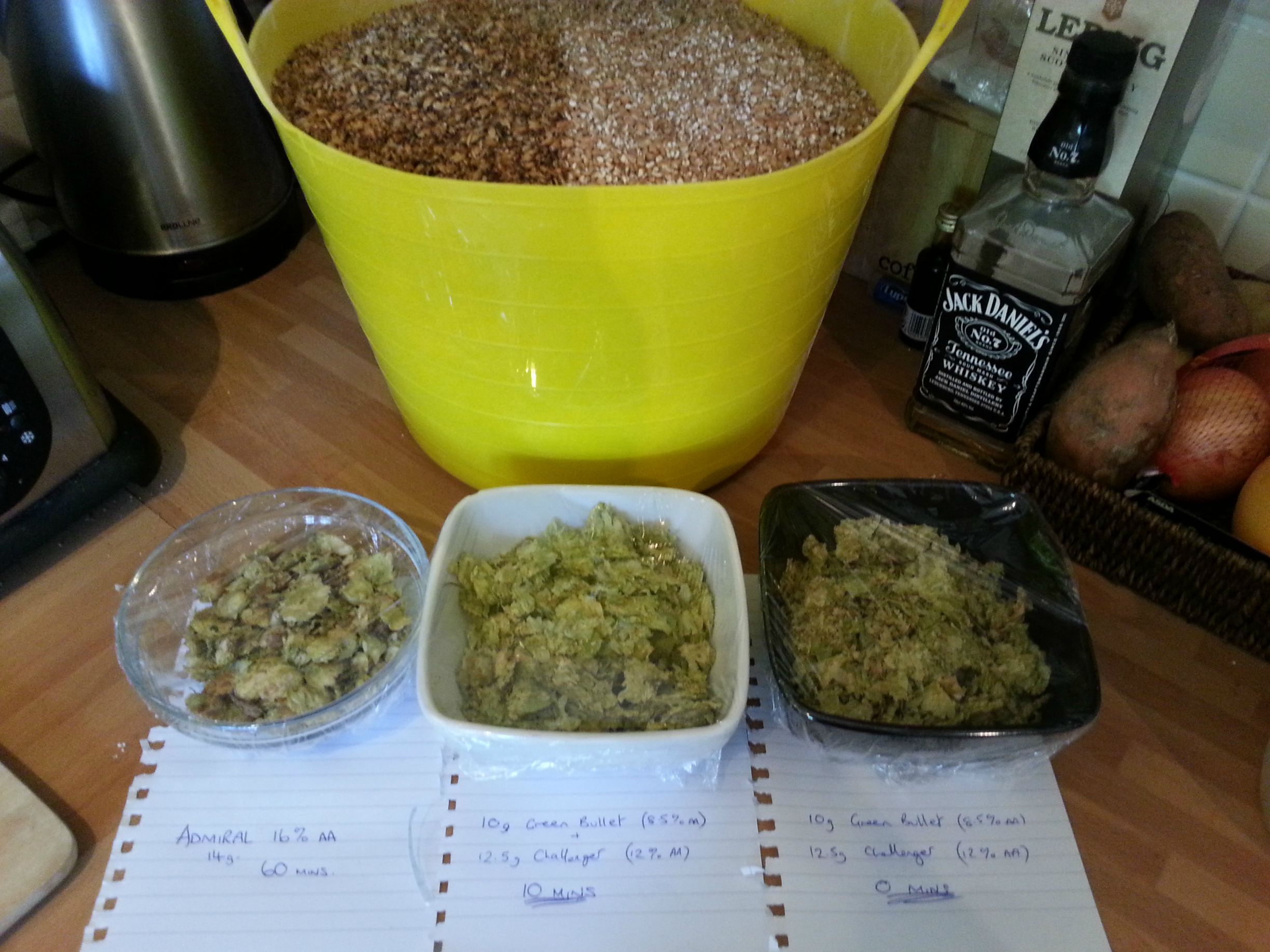
Grains and hops
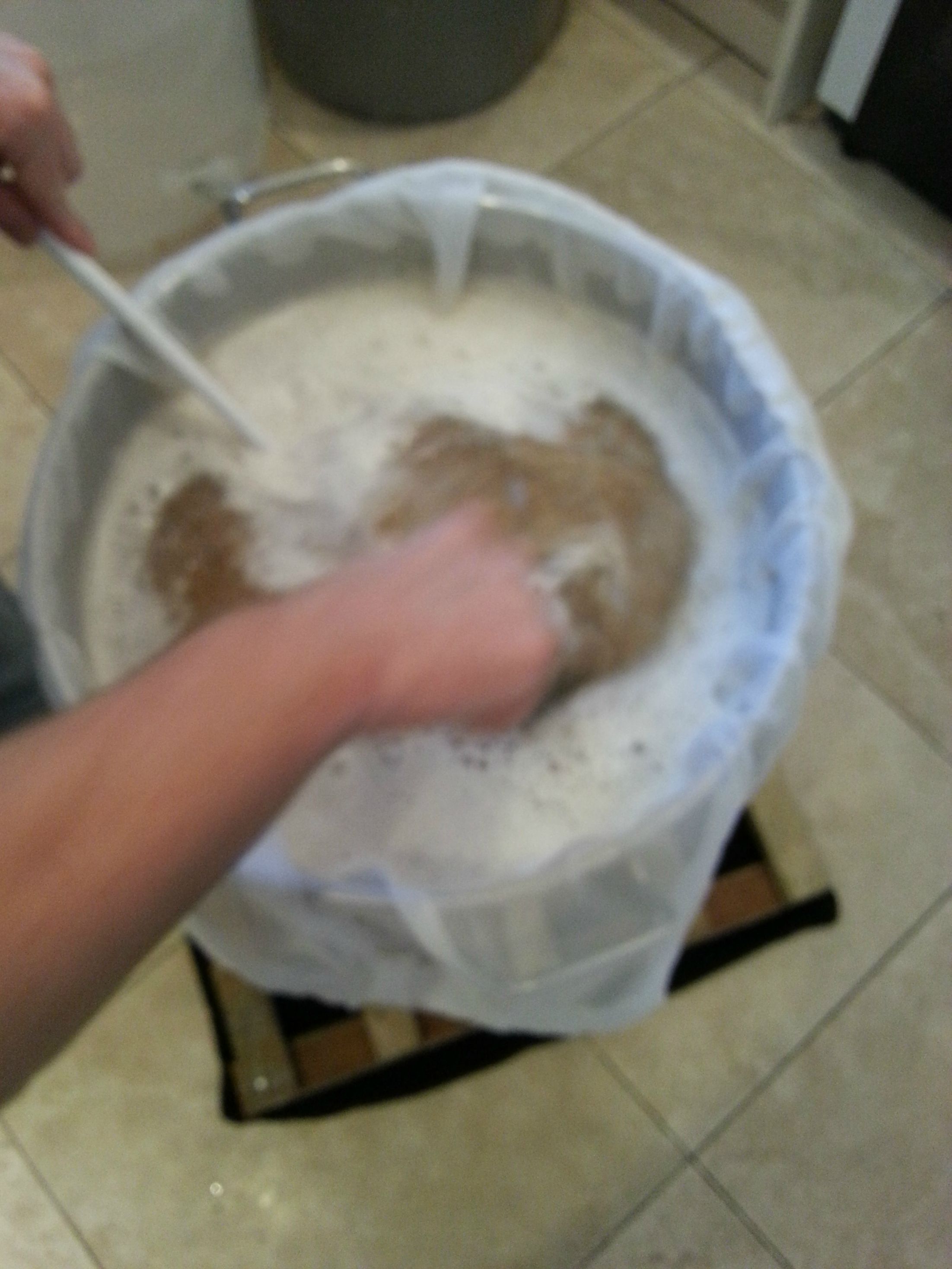
Doughing in.

Wrapped up mashing
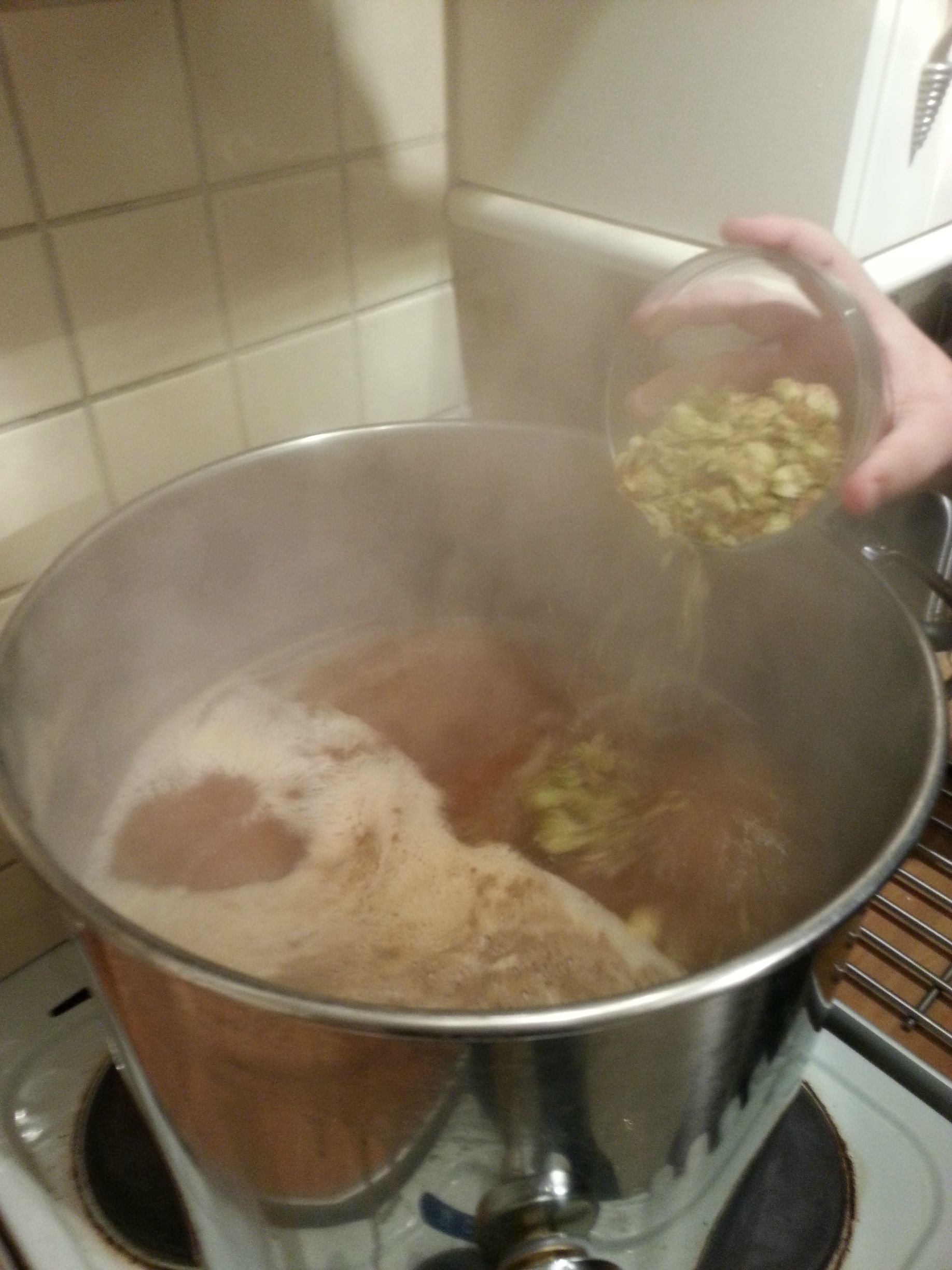
First hop addition
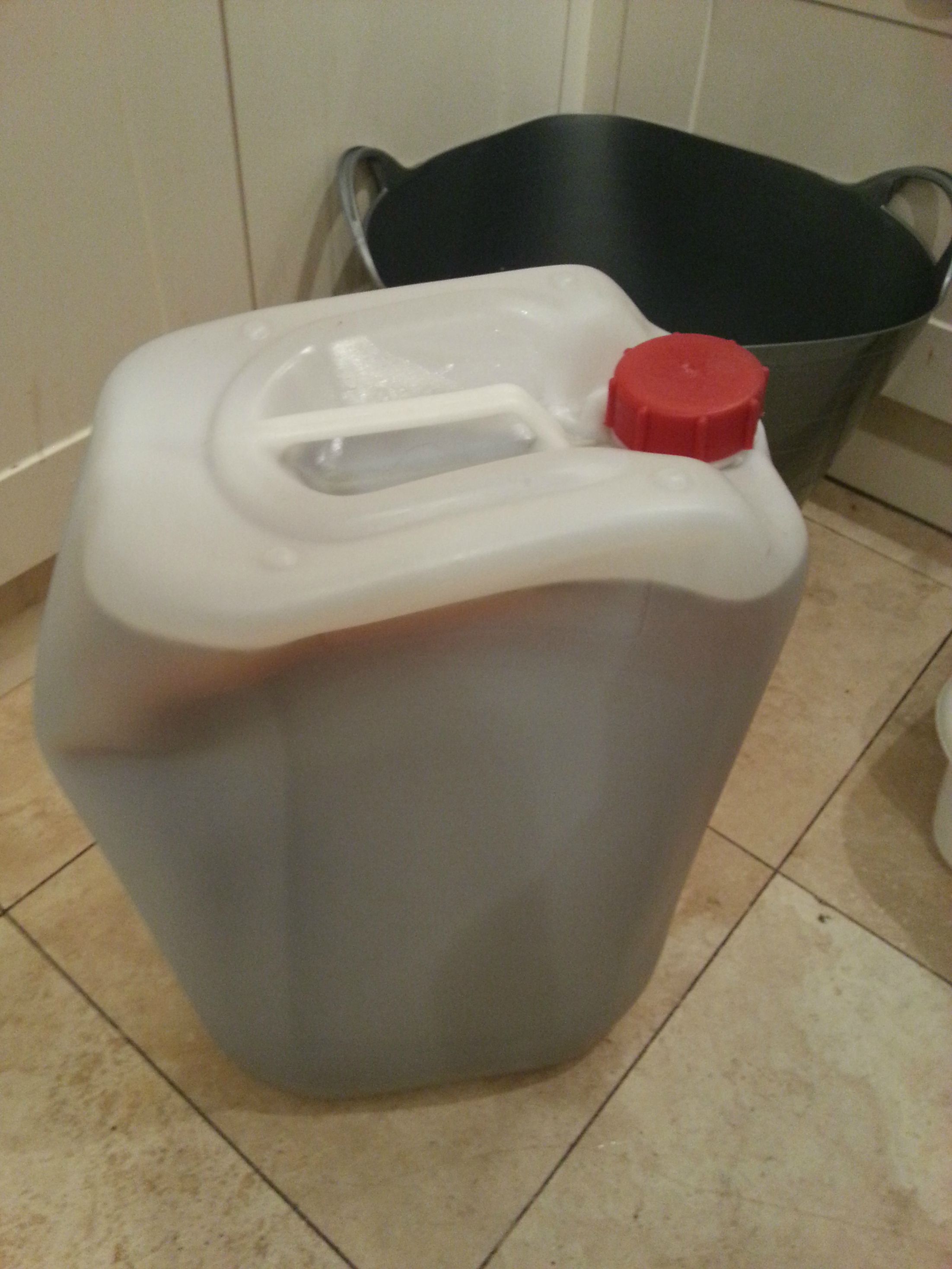
No chill
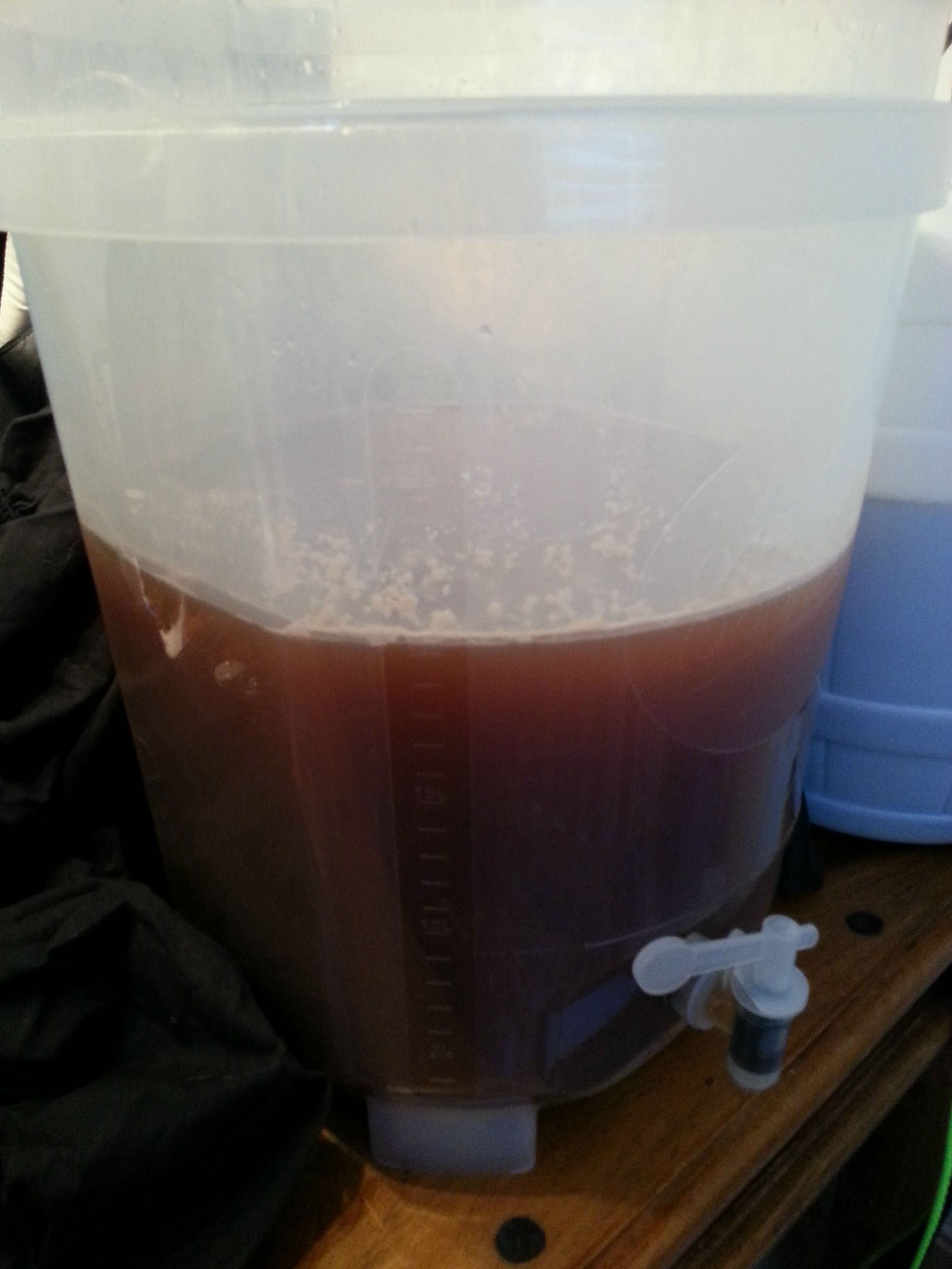
Transferred to FV
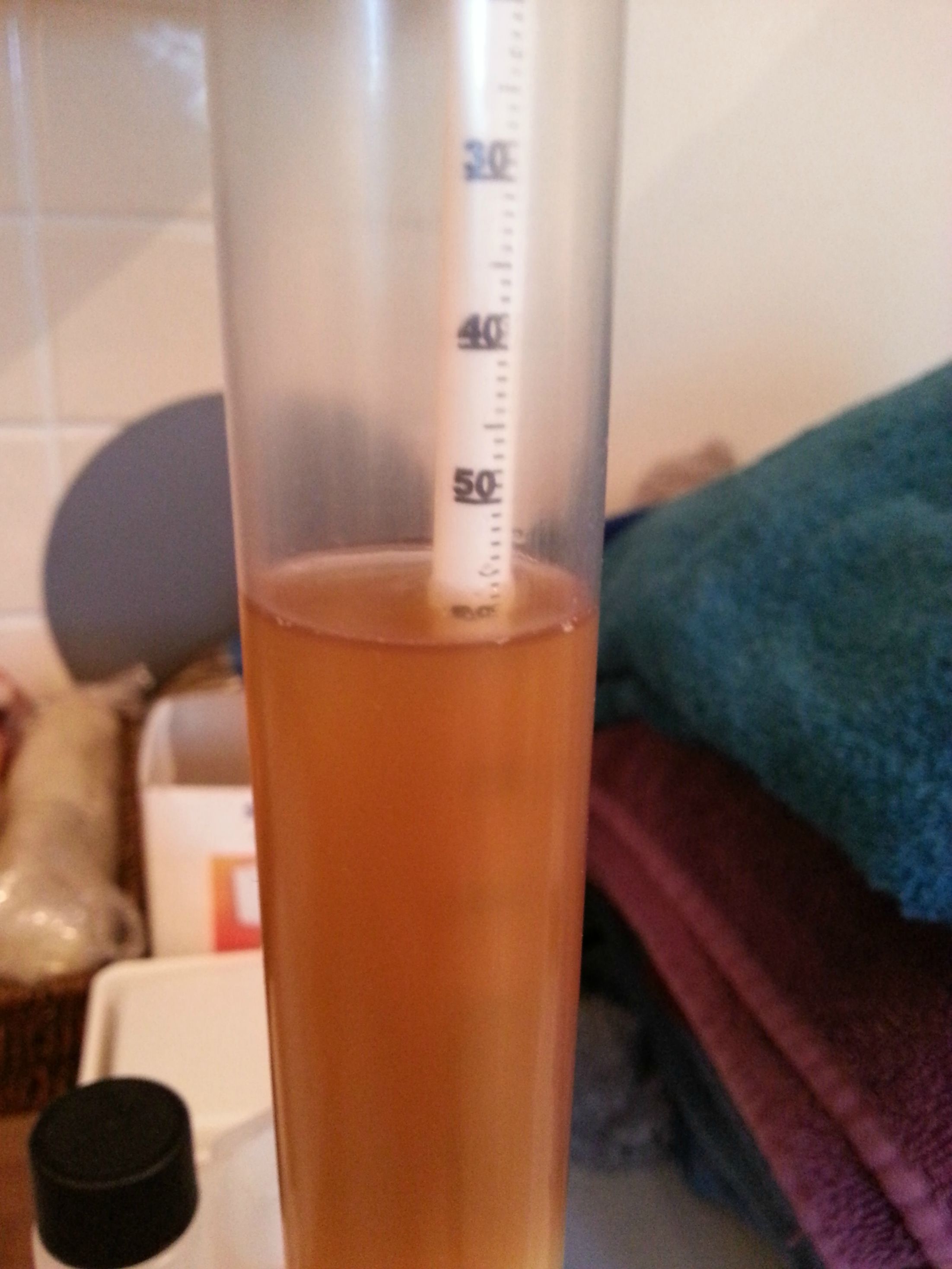
Gravity reading.
I don't know what to expect from this. It all seemed to go to plan except I was aiming for 23L. There was probably 22 in the no chill cube, but I left some in there as I put some voile over the FV when pouring to use as a filter as the hop filter didn't keep them all out. The last bit in the cube was really thick and didn't go through the filter too easily. I decided its best to leave that out of the beer.
I had my brother round giving me a hand and had a good night (sore head this morning) and I learned a lot. Looking forward to getting number 2 going!
So here's what I made;
Grain
5.1kg M.O
245g terrified wheat
200g crystal
Hops
14g Admiral (16.5% AA) - 60 mins
12.5g challenger (8.5% AA) - 10 mins
10g Green Bullet (12% AA) - 10 mins
12.5g challenger (8.5% AA) - 0 mins
10g Green Bullet (12% AA) - 0 mins
Mashed at 68 degrees for 90 mins BIAB
Tsp Irish moss at 15 mins
Started with 33L water which had been left overnight with a crushed campden tablet.
O.G was 1.056 and ended up with 20l in FV.
I used no chill as I don't have a wort chiller yet.
And here are some pics!

Grains and hops

Doughing in.

Wrapped up mashing

First hop addition

No chill

Transferred to FV

Gravity reading.
I don't know what to expect from this. It all seemed to go to plan except I was aiming for 23L. There was probably 22 in the no chill cube, but I left some in there as I put some voile over the FV when pouring to use as a filter as the hop filter didn't keep them all out. The last bit in the cube was really thick and didn't go through the filter too easily. I decided its best to leave that out of the beer.
I had my brother round giving me a hand and had a good night (sore head this morning) and I learned a lot. Looking forward to getting number 2 going!




